International Business Fundamentals,Grade 12th,University/College Preparation (BBB4M)


-
Name:International Business Fundamentals,Grade 12th,University/College Preparation (BBB4M)
-
Grade:Grade 12th
-
Prereq:None
-
Code:BBB4M
-
Type:University/College Preparation
-
Credit Value:1
-
Develop Date:2021-01-01
-
Course Price:CAD $1300
-
Status:Active
Course Description:
This course provides an overview of the importance of international business and trade in the global economy and explores the factors that influence success in international markets. Students will learn about the techniques and strategies associated with marketing, distribution, and managing international business effectively. This course prepares students for postsecondary programs in business, including international business, marketing, and management.
Aims and Objectives:
- Demonstrate an understanding of terminology, concepts, and basic business communication practices related to international business.
- Analyze the impact of international business activity on Canada’s economy.
- Demonstrate an understanding of how international business and economic activities increase the interdependence of nations.
- Analyze ways in which Canadian businesses have been affected by globalization.
- Demonstrate an understanding of the factors that influence a country’s ability to participate in international business.
- Assess the effects of current trends in global business activity and economic conditions.
- Analyze the ways in which cultural factors influence international business methods and operations.
- Assess the ways in which political, economic, and geographic factors influence international business methods and operations.
- Identify and describe common mistakes made by businesses in international markets.
- Evaluate the factors currently affecting the international competitiveness of Canadian businesses.
- Assess the challenges facing a business that wants to market a product internationally.
- Compare the approaches taken by various companies to market their products internationally.
- Demonstrate an understanding of the logistics of, and challenges associated with, distribution to local, national, and international markets.
- Analyze the ways in which ethical considerations affect international business decisions.
- Assess the working environment in international markets.
- Demonstrate an understanding of the process for crossing international borders as it relates to international business.
Expectations:
- Business, Trade, and the Economy
By the end of this course, students will:
- Make an overview of the business environment, as well as main actors, stakeholders and motives of company international activities.
- Introduce basic theoretical approaches and principles, the founders and key followers of management theory.
- The Global Environment for Business
By the end of this course, students will:
- Be able to understand core principles, ideas and instruments of international management.
- Give an understanding of basic management functions.
- Make an overview of corporate structures, processes and procedures originating activities in a global environment.
- International Markets
By the end of this course, students will:
- Emphasize the role of leaders and talents in making business client-centric, socially responsible and sustainable.
- How to target international market and what will be the results by adopting this strategy.
- Marketing Challenge
By the end of this course, students will:
- Build up and stimulate an interest to the course and knowledge-formation process. Stimulate self-work (cabinet and field studies) for an in-depth understanding of the course material.
- Provide a piece of advice on the search on the Internet of the most reliable, respectful and knowledge-based websites, web-pages and video-recourses.
- Coach and consult students in research projects.
- Motivate for excellent results of research projects and its presentations in-class.
Unit-wise Progression:
|
Unit
|
Title and Subtopics |
|
Unit 1 |
Business, Trade, and the Economy
- Hours: 25 |
|
Unit 2 |
The Global Environment for Business
- Hours :25 |
|
Mid-Term - Hours: 2 |
|
|
Unit 3 |
International Markets
- Hours: 25 |
|
Unit 4 |
Marketing Challenge
- Hours: 25 |
|
Culminating Activity – 5 Hours |
|
|
Final Term – 3 Hours |
|
|
Total – Hours 110 |
|
Teaching/Learning Methodologies:
Teachers will bring enthusiasm and varied teaching and assessment approaches to the classroom, addressing individual students’ needs and ensuring sound learning opportunities for every student. The activities offered should enable students to relate and apply these concepts to the social, environmental, and economic conditions and concerns of the world in which they live. Opportunities to relate knowledge and skills to these wider contexts will motivate students to learn in a meaningful way and to become life-long learners. Teachers will help students understand that problem solving of any kind often requires a considerable expenditure of time and energy and a good deal of perseverance. Teachers also will encourage students to investigate reason, explore alternative solutions and take the risks necessary to become successful problem solvers. Effective instructional approaches and learning activities draw on students’ prior knowledge, capture their interest, and encourage meaningful practice both inside and outside the classroom. Students will be engaged when they can see the connection between the scientific concepts they are learning and their application in the world around them and real-life situations. Due to its importance, students will have opportunities to learn in a variety of ways- individually, cooperatively, independently, with teacher direction, through hands-on experiences, and through examples followed by practice. The approaches and strategies teachers use will vary according to both the object of the learning and the needs of the students. Teachers will accomplish this in an online environment with the use of:
- Electronic simulation activities
- Video presentations
- Discussion boards and email
- Assessments with real-time feedback
- Interactive activities that engage both the student and teacher in the subject
- Peer review and assessment
- Internet Instructional Videos
E-Learning Approach:
E-learning is not only a training method but it is a learning method that is tailored to individuals. It is found that different terminologies have been used to define learning that takes place online which actually makes difficult to develop a generic definition.
E-learning includes the delivery of content via Internet, Intranet, and Extranet, satellite broadcast, audio-video tape, interactive TV and CD-ROM. The term implies that the learner is at a distance from the tutor or instructor, that the learner uses some form of technology.
With attention to this new system of education that is spreading across the globe its imperative that the content of such study programs are enhanced and modified to serve both the learner and the instructor well whilst dealing with the gap of conventional studying methodologies. Thus the courses promise its reader an experience full of engagement, student-concentric approach, personalization and Interaction. Using a wide array of multimedia tools, cloud based LMS and diverse repository of subject tailored audio-visual material that student can utilize and learn in a stimulated work environment where he’s in charge of his work hours.
Our e-learners paddle through these courses in the mediation of skilled mentors to the finish line with understanding of their subject’s application into real world problems following a futuristic model of education.
Strategies for Assessment and Evaluation of Student Performance:
Assessment is the ongoing gathering of information related to the individual student’s progress in achieving the curriculum expectations of the course. To guide the student to his/her optimum level of achievement, the teacher provides consistent and detailed feedback and guidance leading to improvement. Strategies may include:
- Diagnostic assessment
- Formative assessment
- Summative assessment
- Performance assessment
- Portfolio assessment
- Rubrics
- Checklists
The final grade will be based on:
|
Weightage in Percentage
|
Categorical Marking Breakdown |
|
40% |
Course Work |
|
15% |
Mid Term |
|
15% |
Culminating Activity |
|
30% |
Final Exam |
|
Assessment of Learning
|
||
|
Student Product |
Observation |
Conversation |
|
Learning Logs (anecdotal) Assignment Pre-tests (scale/rubric) Quizzes (scale/rubric) Rough drafts (rubric) Graphic organizers (scale) Peer feedback (anecdotal/checklist) Reports (rubric) Essays (rubric) Webbing/Mapping (rubric/scale) Vocabulary notebooks (anecdotal) Visual Thinking Networks (rubric) Tests (scale/rubric) Exams
|
Self-proofreading (checklist) Class discussions (anecdotal) Debate (rubric) PowerPoint presentations (rubric) Performance tasks (anecdotal/scale)
|
Student teacher conferences (checklist) Debate (rubric) Peer-feedback (anecdotal) Peer-editing (anecdotal) Oral pre-tests (scale/rubric) Oral quizzes (scale/rubric) Oral tests (scale/rubric) Question and Answer Session (checklist)
|
Resources Required by the Student:
- Microsoft Suite (Word, Excel, Power-point etc.)
- A laptop, or Mac, or Android, or any other operating system functional enough to use the web browser and use online software.
- Curriculum Reference: The Ontario Curriculum, Business







